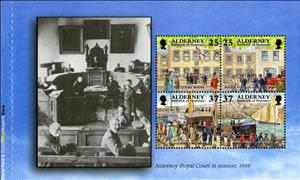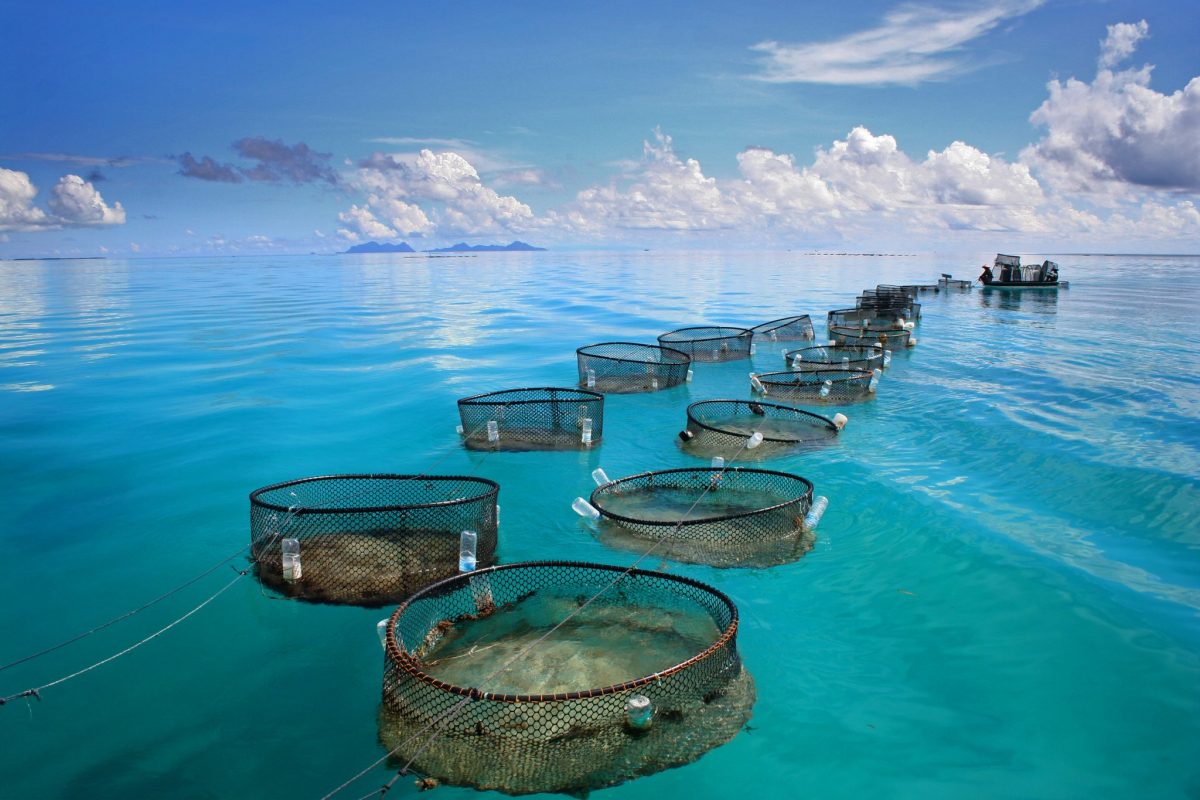Booklet Pane: Alderney's Royal Court in session, 1919 (Alderney 1998)
Alderney's Royal Court in session, 1919 (Alderney 1998)
10 November (Alderney ) within release Garrison Island 1998 - Historical Events goes into circulation Booklet Pane Alderney's Royal Court in session, 1919 face value 2*25_2*37 Guernsey penny
| Booklet Pane Alderney's Royal Court in session, 1919 in catalogues | |
|---|---|
| Michel: | Mi: GG-AL HB13 |
| Stamp Number: | Sn: GG-AL 126c |
Booklet Pane is horizontal format.
Booklet pane from Booklet "Mi:GG-AL MH6"Also in the issue Garrison Island 1998 - Historical Events:
- Booklet Pane - Alderney's Royal Court in session, 1919 face value 2*25_2*37;
- Booklet Pane - Post Office and chemists in Victoria Street, 1920 face value 2*20_2*25;
- Booklet - Prestige Booklet - Garrison Island Part I & II face value 8.48;
- Booklet Pane - SS Courier alongside the breakwater, 1890 face value 2*30_2*37;
- Se-tenant - SS Courier unloading / Fishermen at the Quay face value 2*37;
- Se-tenant - St. Anne's Church / Wedding Party at Albert gate face value 2*30;
- Booklet Pane - St. Anne's Church, 1859 face value 2*20_2*30;
- Se-tenant - The Court House / Police Station and Fire Service face value 2*25;
Booklet Pane Alderney's Royal Court in session, 1919 it reflects the thematic directions:
An anniversary is the date on which an event took place or an institution was founded in a previous year, and may also refer to the commemoration or celebration of that event. For example, the first event is the initial occurrence or, if planned, the inaugural of the event. One year later would be the first anniversary of that event. The word was first used for Catholic feasts to commemorate saints. Most countries celebrate national anniversaries, typically called national days. These could be the date of independence of the nation or the adoption of a new constitution or form of government. The important dates in a sitting monarch's reign may also be commemorated, an event often referred to as a "Jubilee".
Fishery can mean either the enterprise of raising or harvesting fish and other aquatic life or, more commonly, the site where such enterprise takes place (a.k.a., fishing grounds).Commercial fisheries include wild fisheries and fish farms, both in freshwater waterbodies (about 10% of all catch) and the oceans (about 90%). About 500 million people worldwide are economically dependent on fisheries. 171 million tonnes of fish were produced in 2016, but overfishing is an increasing problem, causing declines in some populations.
A port is a maritime facility comprising one or more wharves or loading areas, where ships load and discharge cargo and passengers. Although usually situated on a sea coast or estuary, ports can also be found far inland, such as Hamburg, Manchester and Duluth; these access the sea via rivers or canals. Because of their roles as ports of entry for immigrants as well as soldiers in wartime, many port cities have experienced dramatic multi-ethnic and multicultural changes throughout their histories
A modern sailing ship or sailship is any large wind-powered vessel. Traditionally a sailing ship (or simply ship) is a sailing vessel that carries three or more masts with square sails on each. Large sailing vessels that are not ship-rigged may be more precisely referred to by their sail rig, such as schooner, barque (also spelled "bark"), brig, barkentine, brigantine or sloop. There are many different types of sailing ships, but they all have certain basic things in common. Every sailing ship has a hull, rigging and at least one mast to hold up the sails that use the wind to power the ship. The crew who sail a ship are called sailors or hands. They take turns to take the watch, the active managers of the ship and her performance for a period. Watches are traditionally four hours long. Some sailing ships use traditional ship's bells to tell the time and regulate the watch system, with the bell being rung once for every half hour into the watch and rung eight times at watch end (a four-hour watch). Ocean journeys by sailing ship can take many months, and a common hazard is becoming becalmed because of lack of wind, or being blown off course by severe storms or winds that do not allow progress in the desired direction. A severe storm could lead to shipwreck, and the loss of all hands. Sailing ships are limited in their maximum size compared to ships with heat engines, so economies of scale are also limited. The heaviest sailing ships (limited to those vessels for which sails were the primary means of propulsion) never exceeded 14,000 tons displacement. Sailing ships are therefore also very limited in the supply capacity of their holds, so they have to plan long voyages carefully to include many stops to take on provisions and, in the days before watermakers, fresh water.
These clams live buried in the sediment on tidal flats. While they are common in muddy areas, their name "arenaria" means sandy and they prefer a combination of sandy and muddy areas. They are well known as a food item on the coast of New England in the Western Atlantic Ocean; however, the range extends much farther north to Canada and south to the Southern states. They are also found in the Eastern Atlantic Ocean, for example in the UK, as well as in the North Sea's Wadden Sea (where they are the dominant large clam).





